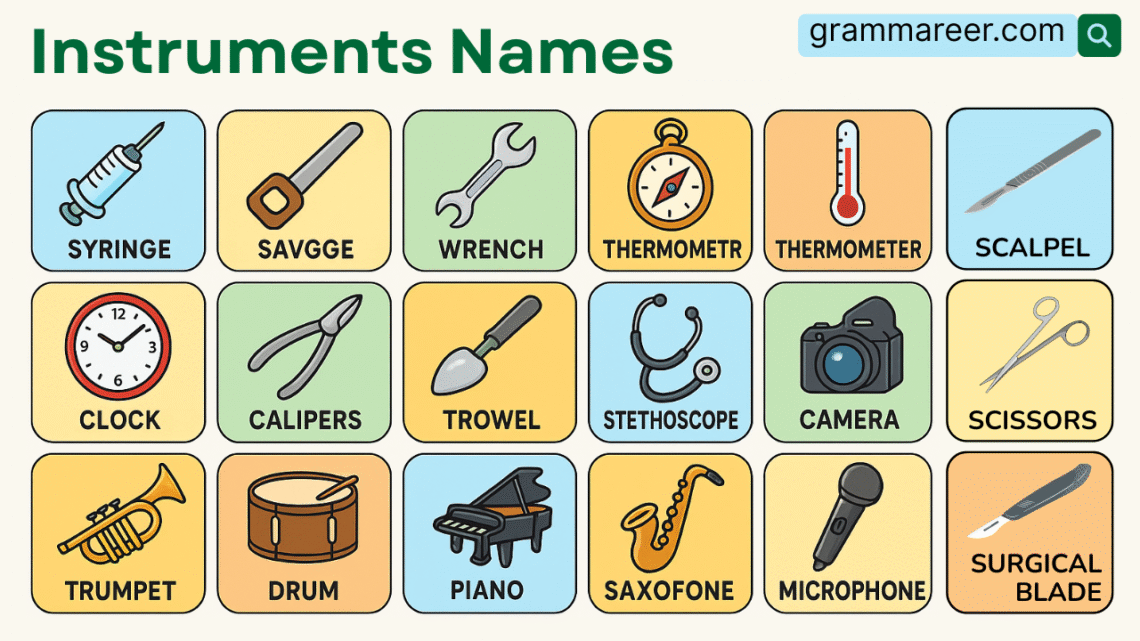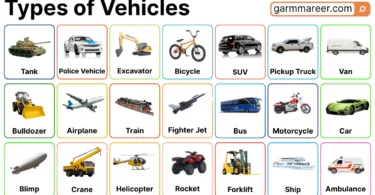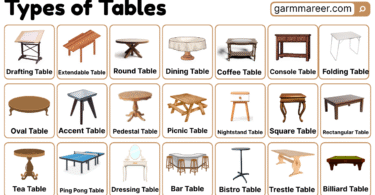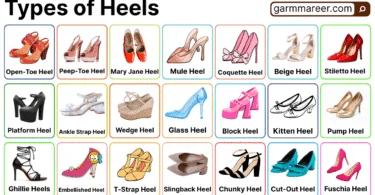Many tools used in daily life, science, or art fall under the category of instruments. Some create sound like a guitar or flute, while others measure or observe, such as a thermometer or microscope. There are also surgical tools like scalpels and forceps, as well as kitchen tools like tongs and graters. Each type of tool has a specific role and helps perform tasks more effectively.
By learning different instruments names, you’ll know what tools are used in cooking, music, labs, and hospitals. This makes it easier to talk about jobs, hobbies, or school subjects in English.
Table of Contents
Different Types of Instruments Names with Pictures
Learning instruments names helps students, musicians, engineers, and medical workers use each tool properly. Below is a list that shows how many kinds of instruments exist in daily work, labs, and surgeries.
| Musical Instruments | Measuring Instruments | Scientific Instruments | Surgical Instruments |
|---|---|---|---|
| Guitar | Thermometer | Microscope | Scalpel |
| Piano | Barometer | Telescope | Forceps |
| Violin | Hygrometer | Spectrometer | Retractor |
| Drum Set | Speedometer | Centrifuge | Surgical Scissors |
| Flute | Stopwatch | pH Meter | Needle Holder |
| Trumpet | Vernier Caliper | Autoclave | Suction Tube |
| Saxophone | Weighing Scale | Bunsen Burner | Speculum |
| Harp | Protractor | Incubator | Surgical Clamp |
| Tabla | Anemometer | Test Tubes | Trocar |
| Electric Guitar | Multimeter | Pipette | Bone Saw |
| Cello | Ruler | Petri Dish | Endoscope |
| Xylophone | Compass (Geometry) | Beaker | Scalpel Blade |
| Accordion | Oscilloscope | Flask | Laparoscope |
| Harmonica | Tensiometer | Electrophoresis Unit | Curette |
| Sitar | Altimeter | Fume Hood | Suture Needle |
| French Horn | Clinometer | Graduated Cylinder | Catheter |
| Maracas | Lux Meter | Thermocycler (PCR Machine) | Retractor Hook |
| Bagpipes | Titrator | DNA Sequencer | Bone File |
| Banjo | Flow Meter | Chromatograph | Hemostat |
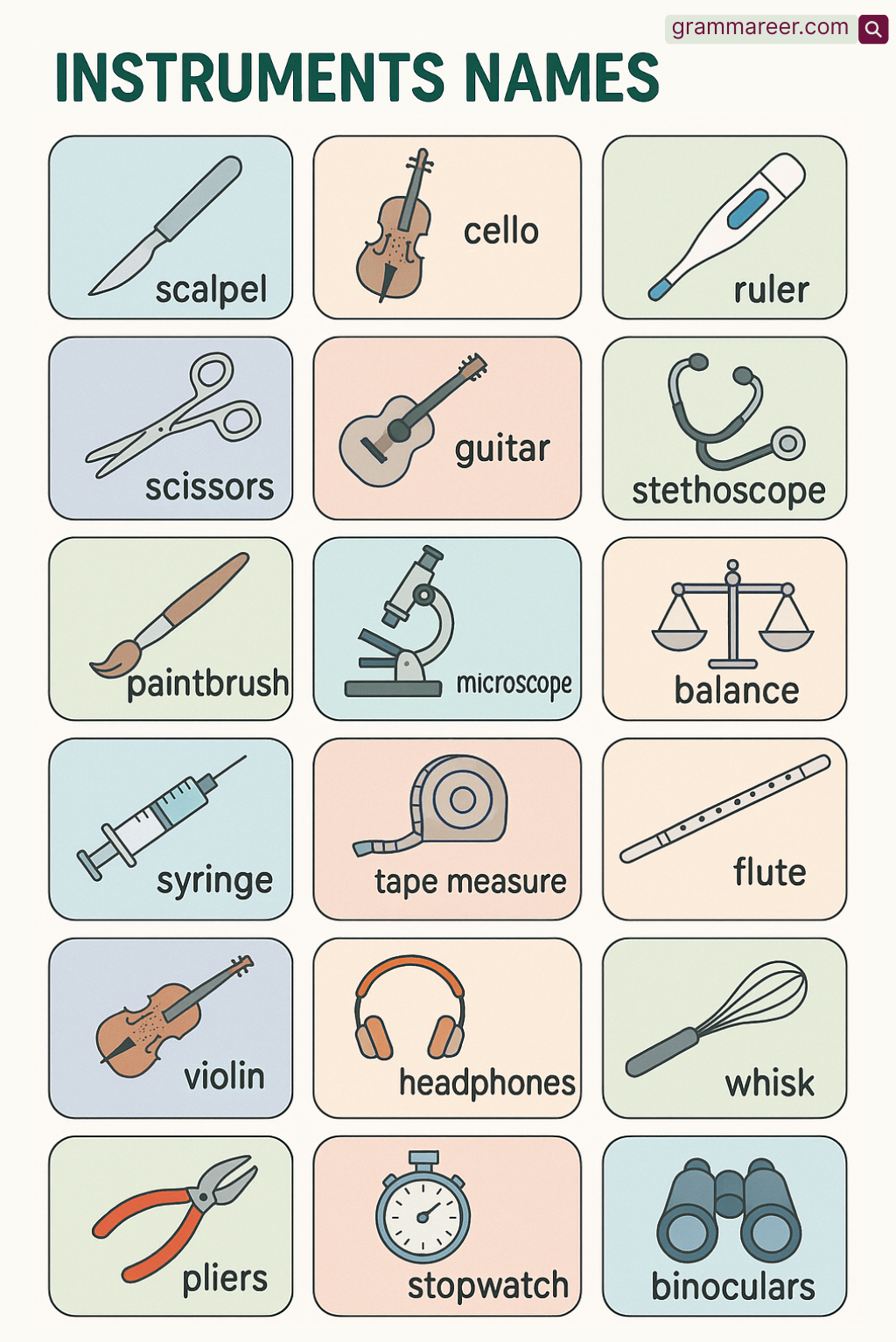
Musical Instruments Names and List
Musical instruments are designed to create sound using strings, air, surfaces, or signals. They are used in bands, concerts, and classrooms. The following list introduces the main types of musical instruments.
String Instruments
These instruments use stretched strings to create sound. They are often played with a bow, pick, or fingers. Below are common names from the string family used in many music styles.
- Violin
- Viola
- Cello
- Double Bass
- Acoustic Guitar
- Electric Guitar
- Bass Guitar
- Harp
- Banjo
- Mandolin
- Sitar
- Ukulele
- Zither
- Lute
- Dulcimer
- Lyre
- Shamisen
- Sarod
- Balalaika
Wind Instruments
Wind instruments create sound when air flows through them, either by blowing directly or using reeds. Many of them are used in orchestras and solo performances. Below are some widely known names.
- Flute
- Piccolo
- Recorder
- Clarinet
- Bass Clarinet
- Oboe
- English Horn
- Bassoon
- Contrabassoon
- Saxophone
- Trumpet
- Cornet
- Flugelhorn
- French Horn
- Trombone
- Tuba
- Euphonium
- Harmonica
- Pan Flute
- Bagpipes
Percussion Instruments
Percussion instruments are played by hitting, shaking, or scraping. They are found in nearly every music style around the world. Here are some commonly used names in this category.
- Snare Drum
- Bass Drum
- Timpani
- Bongos
- Congas
- Tabla
- Djembe
- Cajón
- Tambourine
- Triangle
- Cymbals
- Gong
- Maracas
- Claves
- Xylophone
- Glockenspiel
- Vibraphone
- Marimba
- Castanets
- Cowbell
Electronic Instruments
Electronic instruments use power and signals to create sound. They are important in modern and digital music. The following list covers popular types you might hear in pop, EDM, and more.
- Synthesizer
- Keyboard
- Digital Piano
- Electric Organ
- Drum Machine
- Sampler
- Electric Violin
- Electric Cello
- MIDI Controller
- Theremin
Measuring Instruments Names with Pictures
These instruments are made to measure length, weight, speed, temperature, and more. They’re used in homes, schools, shops, and laboratories. Here’s a list of commonly used measuring tools with their names.
- Ruler: Measures short lengths or straight lines. Common in classrooms and used for everyday small objects.
- Tape Measure: A flexible tool used to measure longer distances. Often used in construction or home repairs.
- Yardstick: A long straight tool, usually three feet. Used for measuring flat surfaces or fabric.
- Vernier Caliper: Measures inner and outer widths very accurately. Used in science labs and workshops.
- Micrometer Screw Gauge: Measures tiny objects with great precision. Ideal for thin wires or small parts.
- Feeler Gauge: Measures small gaps or clearances between two objects. Used often in engine work.
- Protractor: Measures angles in degrees. Mostly used in geometry and drawing tasks.
- Spirit Level: Checks if a surface is flat or straight. Used in building and carpentry work.
- Thermometer: Measures temperature. Useful in weather checks, cooking, or medical use.
- Barometer: Measures air pressure. Helps in predicting weather changes and storm patterns.
- Manometer: Measures gas or liquid pressure. Found in labs or HVAC systems.
- Hygrometer: Measures air humidity. Often seen in weather stations or greenhouses.
- Anemometer: Measures wind speed. Used by meteorologists and sailors.
- Lux Meter: Measures how bright light is. Helps set proper lighting in rooms or workspaces.
- Multimeter: Measures voltage, current, and resistance. Used in electronics and repairs.
- Clamp Meter: Measures electric current without touching wires directly. Handy for electricians.
- Oscilloscope: Displays how electric signals change. Used in labs to study wave patterns.
- Stopwatch: Measures time in seconds. Common in races, sports, and lab experiments.
- Weighing Scale: Measures the weight of an object. Found in kitchens, labs, and stores.
- Spring Balance: Measures force or weight using a spring. Good for classroom science experiments.
Scientific Instruments
Scientific instruments help people study, test, and understand how things work. You’ll find these in laboratories and classrooms. Below is a vocabulary list of important instruments used in science.
- Microscope
- Telescope
- Magnifying Glass
- Spectrometer
- Spectrophotometer
- Centrifuge
- Incubator
- Bunsen Burner
- Test Tube
- Beaker
- Flask
- Pipette
- Petri Dish
- pH Meter
- Colorimeter
- Electrophoresis Machine
- Autoclave
- Fume Hood
- Hot Plate
- Analytical Balance
Navigational Instruments
Navigational instruments help us know direction, distance, or position on land or sea. These tools are often used in travel, flights, and ships. Here’s a list of important navigation tools.
- Magnetic Compass: Helps find direction using Earth’s magnetic field. It always points toward magnetic north.
- Gyrocompass: Finds true north by using Earth’s rotation. It works even if magnetic fields are nearby.
- Sextant: Measures angles between the horizon and stars. Used to figure out a ship’s exact location.
- Astrolabe: A very old tool that helps tell time and find star positions. Used before modern devices existed.
- Marine Chronometer: A super accurate sea clock. It helps sailors know their exact longitude.
- GPS Device: Uses satellites to show your exact spot on Earth. Common in both ships and phones.
- Radar: Sends out radio waves that bounce off objects. Helps spot land or other ships ahead.
- Sonar: Sends sound waves into the water. Helps find the depth or objects below the ship.
- Binoculars: Makes faraway things look closer. Great for spotting land or ships during travel.
- Telescope: Used to see stars or far-off ships better. Helpful when sailing by the stars.
- Nautical Chart: A special kind of sea map. Shows safe routes, water depth, and hidden dangers.
- Map: A flat drawing that shows land or sea areas. Helps plan where to go.
- Echo Sounder: Sends sounds straight down into the water. Helps know how deep the sea is below.
- Altimeter: Tells how high something is above sea level. Mostly used in planes but works on ships too.
- Inclinometer: Measures how much the ship is tilted. Important for staying balanced during waves.
Surveying Instruments
Surveying tools help with land measurement, mapping, and construction. Engineers and surveyors use these for accuracy in building and planning. Here’s a vocabulary list of essential instruments in this field.
- Theodolite
- Total Station
- Dumpy Level
- Auto Level
- Laser Level
- Plane Table
- Survey Tripod
- Plumb Bob
- Measuring Chain
- Measuring Tape
- Survey Rod
- GPS Survey Receiver
- Clinometer
- Alidade
- Prism
Common Kitchen Instruments
A modern kitchen has many handy instruments that make preparing food easier, faster, and safer. Below is a comprehensive list of Kitchen Instruments.
Cutting Instruments
- Chef’s Knife
- Paring Knife
- Kitchen Shears
- Peeler
- Mandoline Slicer
- Bread Knife
- Boning Knife
- Cleaver
Cooking Instruments
- Saucepan
- Frying Pan (Skillet)
- Stock Pot
- Pressure Cooker
- Steamer Basket
- Wok
- Dutch Oven
- Griddle
Baking Instruments
- Mixing Bowls
- Measuring Cups
- Measuring Spoons
- Rolling Pin
- Baking Tray
- Whisk
- Pastry Brush
- Cake Pan
- Muffin Tin
- Cooling Rack
Common Surgical Instruments Names
Surgical instruments help doctors do operations safely and accurately. Below is a list of common surgical instruments.
- Scalpel
- Forceps
- Hemostat
- Needle Holder
- Surgical Scissors
- Retractor
- Towel Clamp
- Surgical Stapler
- Speculum
- Suction Tube
- Bone Saw
- Curette
- Trocar
- Catheter
- Dilator
- Probe
- Surgical Drape
- Surgical Sponge
- Retractor Hook
- Lancet
Types of Instruments and their Uses in their Field
| Type of Instrument | Examples | Main Use in Field |
|---|---|---|
| Musical Instruments | Guitar, Piano, Violin, Drum Set | Create, perform, and record music; express emotions and culture. |
| Measuring Instruments | Thermometer, Barometer, Vernier Caliper | Measure temperature, pressure, length, weight, speed, angles, etc. |
| Scientific Instruments | Microscope, Telescope, Spectrometer | Observe tiny or distant objects; analyze substances; conduct experiments in labs. |
| Surgical Instruments | Scalpel, Forceps, Retractor, Endoscope | Perform operations; make incisions, hold tissues, extract objects, or examine inside the body. |
| Navigational Instruments | Compass, Sextant, GPS | Determine direction, position, and route for travel on land, sea, or air. |
| Surveying Instruments | Theodolite, Total Station, Level | Measure land, angles, and elevations for construction, mapping, and land division. |
| Financial Instruments | Stocks, Bonds, Derivatives | Represent monetary value; used for investment, saving, trading, and risk management. |
| Legal Instruments | Deeds, Contracts, Wills | Formal documents that create, modify, or terminate legal rights and obligations. |
FAQs About Instruments
Common musical instruments include the guitar, piano, violin, flute, trumpet, drums, and saxophone.
Examples of measuring instruments are the ruler, thermometer, weighing scale, barometer, and Vernier caliper.
In scientific labs, you’ll find instruments like microscopes, beakers, test tubes, centrifuges, and pH meters.
Navigational instruments include the compass, GPS device, sextant, radar, sonar, and marine chronometer.
Common surgical instruments are the scalpel, forceps, scissors, retractors, and needle holders.
You May Also Like
- Tools Names in English
- Surgical Instruments Names
- Musical Instruments Names

